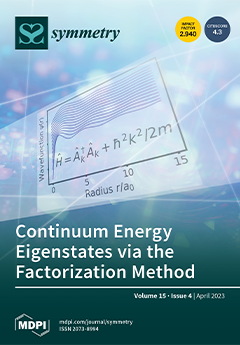Many properties of special polynomials, such as recurrence relations, sum formulas, and symmetric properties, have been studied in the literature with the help of generating functions and their functional equations. In this paper, we define the generalized
-Bernoulli–Fibonacci
[...] Read more.
Many properties of special polynomials, such as recurrence relations, sum formulas, and symmetric properties, have been studied in the literature with the help of generating functions and their functional equations. In this paper, we define the generalized
-Bernoulli–Fibonacci and generalized
-Bernoulli–Lucas polynomials and numbers by using the
-Bernoulli numbers, unified
-Bernoulli polynomials,
-Fibonacci polynomials, and
-Lucas polynomials. We also introduce the generalized bivariate
-Bernoulli–Fibonacci and generalized bivariate
-Bernoulli–Lucas polynomials and numbers. Then, we derive some properties of these newly established polynomials and numbers by using their generating functions with their functional equations. Finally, we provide some families of bilinear and bilateral generating functions for the generalized bivariate
-Bernoulli–Fibonacci polynomials.
Full article





